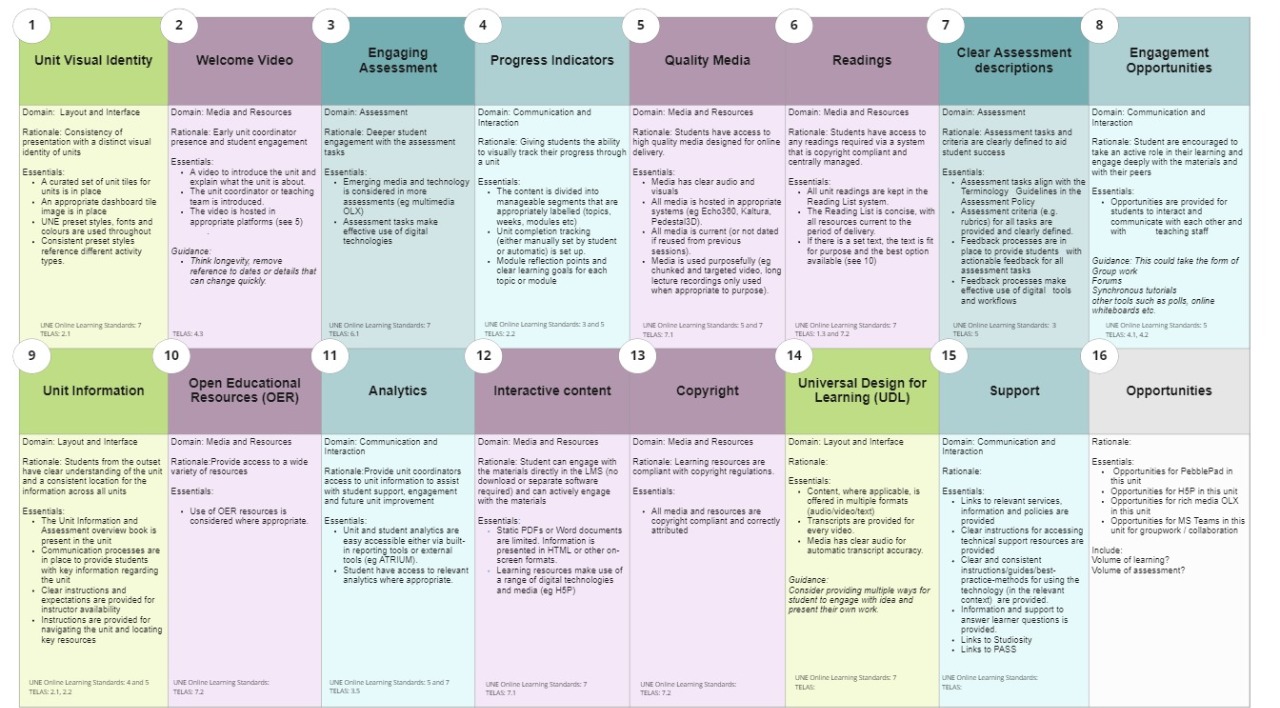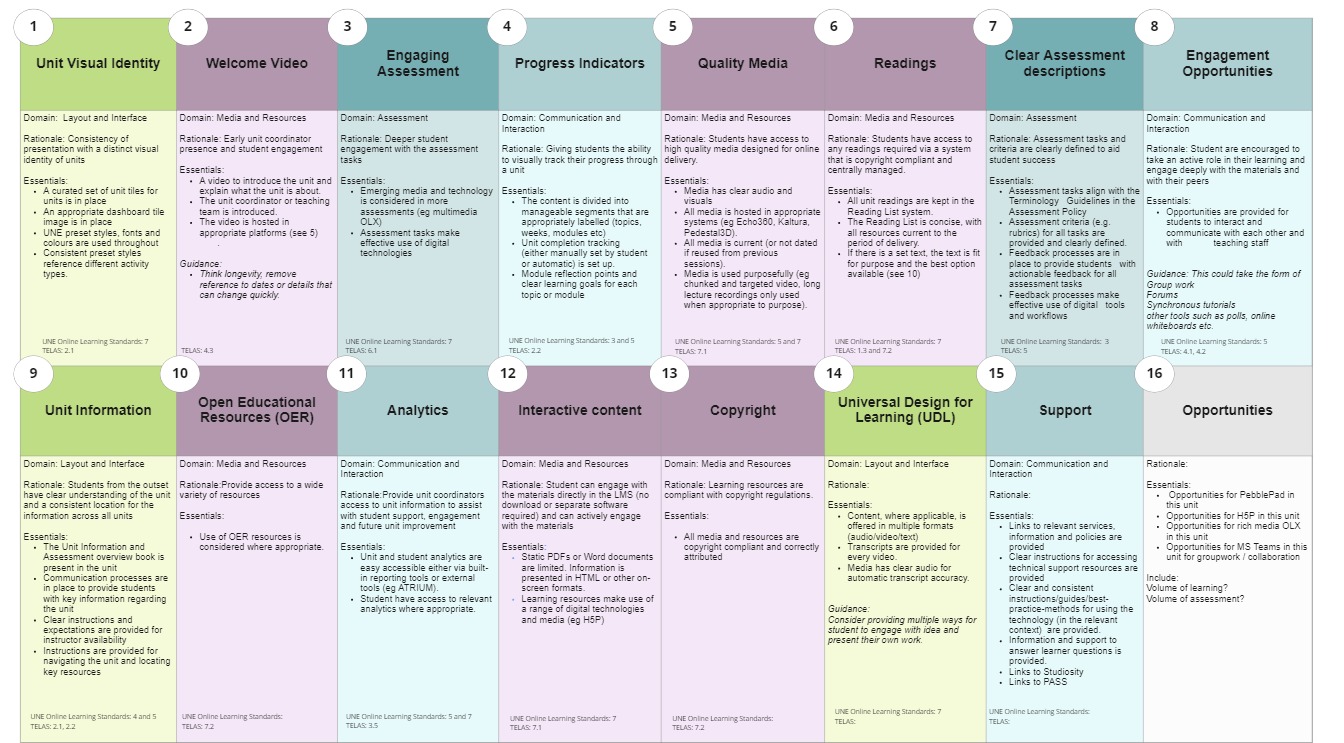

This element focuses on assessment tasks and the importance of feedback to support student learning and success. It is important that assessment criteria are clearly defined and that students are provided with feedback that is informative, timely and in a suitable format.
Feedback is an integral aspect of the learning process. It provides opportunity for progression of learning to become visible to the learner. However, the value of feedback is easily missed if the learner does not have timely access to it, is able to identify that the information is in fact feedback, knows how to interpret the feedback and then respond in a meaningful way to it to progress learning.
It may be clear to you as a marker/unit coordinator that feedback is provided, but students may need some guidance in terms of understanding the feedback processes within a unit.
Feedback to student assessment is an important part of learning, as it helps justify to them how you arrived at their mark/grade. It also helps you to identify and reward specific qualities in their work, and to make recommendation for improvement. It helps students discern what you think is important in the course. Ideally, feedback should:
Feedback can be formal (via assessment grade) or informal (via forum Q&A), or non-assessed checks on learning (discussions or quizzes).
Rubrics provide a means of providing feedback in a consistent way and can be supplemented with additional marker comments if required. Rubrics can also be used to enable students to self-assess, particularly if they are actively used as part of the teaching process. In this capacity rubrics can act as feed forward mechanisms. As part of this sense making process opportunities for feedback can be enhanced by utilising opportunities for dialogue and creating shared understandings of unit and learning expectations.
The provision of feedback is not sufficient on its own to support shifts in student learning. Interpreting and responding to feedback requires taking action to promote change. Consideration should be given as to how a learner is expected or encouraged to respond to close the feedback loop and how this expectation is communicated to them.
A significant challenge emanates from generally limited student engagement with feedback (Winstone et al. 2017). A related barrier is modest student feedback literacy: the capacities and dispositions to make use of feedback productively (Carless and Boud 2018). For students to engage actively with feedback, they need agency in line with social constructivist approaches to learning (Rust, O’Donovan and Price 2005). Social constructivist feedback research and practice takes the perspective that shared and individual interpretations are developed through dialogue, sense-making and co-construction (Price, Handley and Millar 2011). Feedback predominantly in the form of teacher transmission of information to students is insufficient to promote complex learning (Sadler 2010). (Carless, 2019, p.5)
This element relates to the following research and practice informed guidelines/ frameworks:
TELAS Guidelines
UNE Learning Standards
UNE Course Design Framework
UNE Assessment Policy
Some things you can do include:
Using Rubrics Digital Education @ UNE Blog
Rubrics: Why and howWebinar Slides Rubrics Why And How
Teaching Online @ UNE contains information on design, development and application of rubrics.
Contact the Learning Design team for specific unit related guidance and advice: learningdesign@une.edu.au
ACODE. (2017). Threshold standards for online. Retrieved from https://www.acode.edu.au/pluginfile.php/1530/mod_resource/content/1/ACODE_TSFOLE_draft_1.2.pdf
Carless, D. (2019). Feedback loops and the longer-term: Towards feedback spirals. Assessment & Evaluation in Higher Education, 44(5), 705–714. https://doi.org/10.1080/02602938.2018.1531108
TELAS Framework https://www.telas.edu.au/framework/
UNE Online Learning Standards: https://myune.sharepoint.com/sites/academic-transformation/SitePages/Principals-for-Designing-Learning-Experiences-Online.aspx
Domain: Assessment
Rationale: Assessment tasks and criteria are clearly defined to aid student success; students are provided with feedback to support success
Essentials:
Standards: